Description
Beneficial Nematodes are naturally occurring, microscopic organisms found in soils throughout the world. They parasitize and kill insect pests in their larval or pupal stage of development preventing egg laying and limiting plant damage. After nematodes locate a host, they release bacteria within the pest that kills the host pest within 24-48 hours while the nematodes continue to reproduce within it.
While each species attacks a wide variety of pests, they are species specific and safe to use around beneficial insects, mammals or aquatic life.
Use this combination to achieve the broadest coverage of a wide variety of soil dwelling pest populations or if you are unsure of the specific pests you have.
- 5 million treats around 1,600 sq ft
- 10 million treats around 3,200 sq ft
- 50 million treats 1 acre
This item ships via Fedex 2-day air only due to the live, temperature sensitive nature of the nematodes
The Triple-Threat Combo includes each of three beneficial nematode species:
- Steinernema carpocapsae (Sc)
- Steinernema feltiae (Sf)
- Heterorhabditis bacteriaphora (Hb)
NemAttack, Sc – Armyworm (Pseudaletia unipuncta), Artichoke Plume Moth, Bagworm, Beet Armyworm (Spodoptera exigua (Hubner)), Black Cutworm (Agrotis ipsilon (Hufnagel)), Black Vine Weevil (Otiorhynchus sulcatus), Bluegrass Weevil, Caterpillars, Cockroaches (American, Asian, German), Codling Moth (Cydia pomonella), Corn Earworm, Cotton Bollworm, Cranberry Girdler, Cucumber Beetle, Cutworm (Agrotis, Amathes, Peridroma, Prodenia spp), Fall Armyworm (Spodoptera frugiperda), Flea Larvae, Fly Larvae, Fruit Flies (Drasophylla), Greater Peach Tree Borer (Synanthedon exitiosa), Lesser Peach Tree Borer (Synanthedon pictipes), Large Pine Weevil, Leafminers, Mint Flea Beetle, Mint Root Borer, Mole Crickets, Navel Orangeworm, Strawberry Root Weevil (Otiorhynchus ovatus), Tobacco Budworm, Webworms, Wireworm, Wood Borers
NemAttack, Sf – Beet Armyworm, Black Cutworm, Cabbage Maggot, Codling Moth, Corn Earworm, Cucumber Beetle, Fruit Flies (Drasophylla), Fungus Gnats (Bradysia impatiens), Onion Maggots, Pill Worm, Raspberry Crown Borer, Root Maggots, Sclarids, Shore Flies, Subterranean Termites, Sweet Potato Weevil, Thrips (Franklinothrips sp), Ticks, Tobacco Cutworm
NemaSeek, Hb – Ants (Queen), Asparagus Beetle (Crioceris asparagi; Crioceris duodecimpunctata), Bagworm, Banana Moth, Banana Weevil, Berry Root Weevil, Billbug, Black Vine Weevil, Borers (Iris, Tree, Vine), Carrot Weevil (Listronotus oregonensis), Chafers (European, Masked), Citrus Root Weevil, Colorado Potato Beetle (Leptinotarsa decemlineata), Corn Rootworm, Cranberry Root Weevil, Cucumber Beetle (Spotted) (Diabrotica undecimpunctata howardi), Flea Beetles, Fleas (Adults), Gall Midges, Grape Root Borer, Grubs, Humpbacked Flies, Japanese Beetle (Popillia japonica Newman), Leafminers, May/June Bugs (Phyllophaga sp.), Root Weevils, Scarabs, Sugarcane Stalk Borer, Sweet Potato Weevil, Ticks
Application
Beneficial nematodes should be mixed with water and sprayed directly into the soil. Hose-end sprayers and pump sprayers work best, but nematodes can also be applied with a watering can, through irrigation systems, and by syringe injection.
The amount of water you mix with the nematodes depends on the area you plan to treat and your type of sprayer/size of the tank. You want to divide the nematodes by the number of tanks full of water it will take you to treat your entire area. For example, if you have a 10′ x 10′ garden and it takes you two full tanks of water to spray the entire area, split the nematodes into two portions. Fill your tank and add half the nematodes. Spray until empty. Then repeat. It is important to thoroughly spray all areas since nematodes are microscopic in size and have limited range of horizontal movement, instead moving mainly vertically into the soil until they find a pest to infect.
- Thoroughly wet the soil of the entire area you plan to treat.
- Apply when soil temperatures are above 42F.
- Apply early in the morning or at dusk when temperatures are lower and the sun is not directly on the soil.
- It is best to make two applications 7-10 days apart to stagger the life cycle stages of the nematodes.
- Only mix the amount of nematodes you plan to use at the time. Do not store them in water.

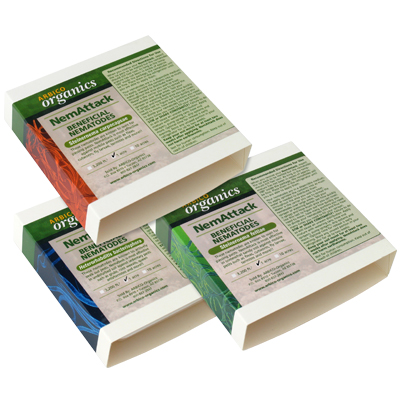
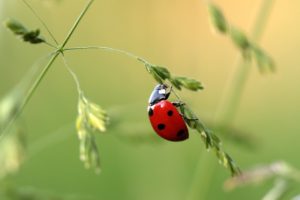
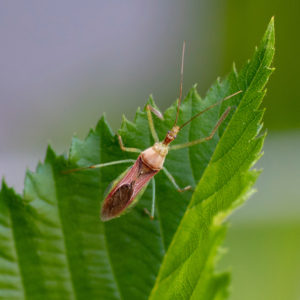
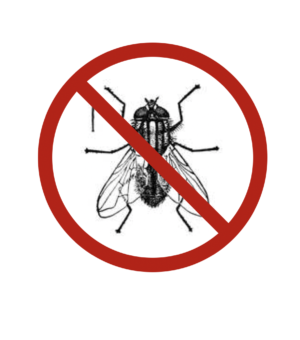
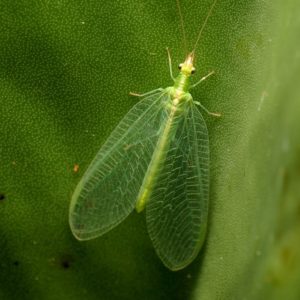
Reviews
There are no reviews yet.